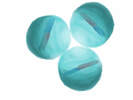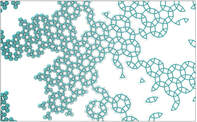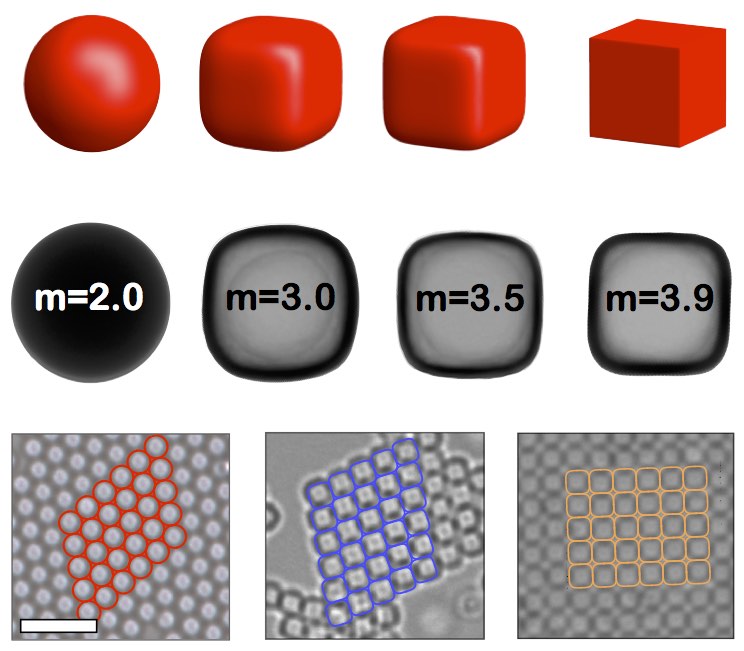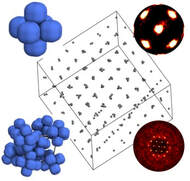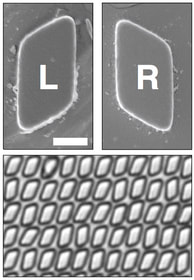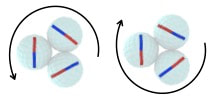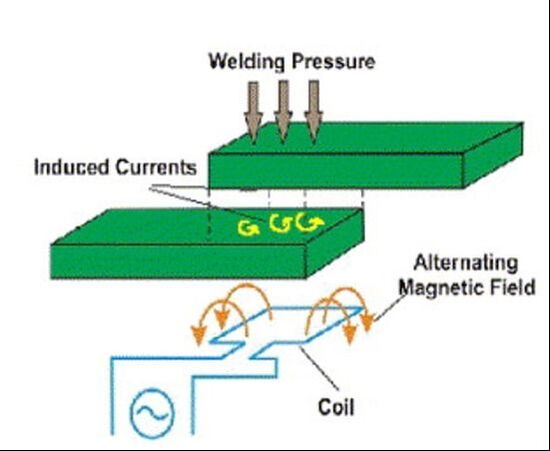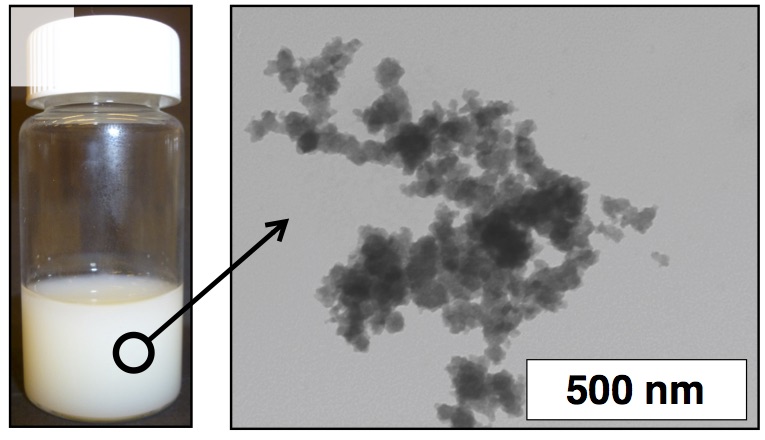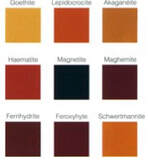Research
Patchy ColloidsAnisotropy plays a key role in colloidal self-assembly, it is therefore important to design colloidal building blocks able to bind through highly directional interactions. We have recently shown that magnetic hematite particles embedded into polymer spheres can be effectively used as “magnetic patches” promoting asymmetric directional interactions between the spheres and that can give rise to unique hierarchical assemblies.
S. Sacanna, L. Rossi and D.J. Pine Magnetic Click Colloidal Assembly. Journal of the American Chemical Society, 134(14), 6112–6115 (2012). J. G. Donaldson, P. Schall and L. Rossi Magnetic coupling in colloidal clusters for hierarchical self-assembly, ACS Nano, 15, 4989-4999 (2021). |
Colloidal SuperballsGuiding the self-assembly of materials by controlling the shape of the individual particle constituents is a powerful approach to material design. We have previously shown that colloidal silica superballs crystallize into a variety of ordered phases when depletant objects induce an attraction between the colloids. The differences in these entropically stabilized structures are driven by minute deviations of the particle shape and are uniquely determined by an interplay between the size of depletants and the fine structure of the superball shape.
Using the same particle shapes we are now investigating hierarchical assembly to drive the formation of high-order structures that differ from bulk self-assembly of the individual particles. L Rossi, V Soni, D J Ashton, D J Pine, A P Philipse, P M Chaikin, et al. Shape-sensitive crystallization in colloidal superball fluids. Proceedings of the National Academy of Sciences, 112(17), 5286–5290 (2015). L. Baldauf, E. G. Teich, P. Schall, G. van Anders and L. Rossi Shape and interaction decoupling for colloidal pre-assembly, Science Advances, 8, 21 (2022). |
Chiral ColloidsChirality is a fundamental aspect of many processes in chemistry and biology and studying the interaction of chiral colloidal particles could allow further understanding of those processes. We have applied a top-down lithographic technique for the preparation of simple 2D chiral polygonal colloids with parallelogram shapes. We used these microscale colloids for the systematic study of entropic interaction between chiral particles. As in molecular systems, we can identify two enantiomers (+) and (-) and we can control their relative ratios by means of roughness controlled depletion attraction. We were therefore able to prepare and study the phase behavior of enantiopure samples.
Beside shape, chirality can also arise from directional interactions. We are currently investigating the unique processes that drive the self-assembly of magnetically chiral colloids. L Rossi and T G Mason Controlling enantiomeric populations in fluctuating Brownian monolayers of chiral colloids. Soft Matter, 11(12), 2461–2468 (2015). J. G. Donaldson, P. Schall and L. Rossi Magnetic coupling in colloidal clusters for hierarchical self-assembly, ACS Nano, 15, 4989-4999 (2021). |
|
T. J. Ahmed et al, Composites Part A: Applied Science and Manufacturing,37, 10, 2006
|
Induction welding of thermoplastic composites
Thermoplastic composites, such as carbon fibers reinforced polyetheretherketone, contribute to a sustainable aviation owing to their high stiffness, strength and damage tolerance at low weight. By melting the polymer matrix, these materials become processable and can be fused without needing adhesives. Thermoplastic fusion bonding processes require localized heat generation at the interface through, eg. ultrasonic resistance or induction welding. In this project ,we investigate the potential of using iron oxide nanoparticles for induction heating of carbon fiber reinforced polyetheretherketone to allow higher precision and better control of induction welding processes of composite thermoplastic materials.
This project is a collaboration with Prof. Clemens Dransfeld at the faculty of Aerospace Engineering of TU Delft. |
|
Image taken from: Iron Oxides in the Laboratory: Preparation and Characterization, U. Schwertmann and R. M. Cornell, Second Edition: Wiley-VCH Verlag GmbH & Co. KGaA., 2000.
|
Food Colloids
The growing demand for functional foods enriched with micronutrients and nutraceuticals is largely driven by the increasing knowledge of the relationship between food ingredients and their impact on human health and physiological functions. As a result, there is a growing demand for novel functional foods. In collaboration with Unilever we developed novel colloidal delivery systems with complex morphology that allow the control over the color, morphology, stability and product compatibility.
Currently we are investigating the development of colored colloidal delivery systems that can be employed in a variety of emerging plant-based foods. L Rossi, K P Velikov and A P Philipse Colloidal iron(III) pyrophosphate particles. Food Chemistry, 151(C), 243–247 (2014). L Rossi, JWMS ten Hoorn, S M Melnikov and K P Velikov Colloidal phytosterols: synthesis, characterization and bioaccessibility Soft Matter, 6(5), 928–936 (2010). |
